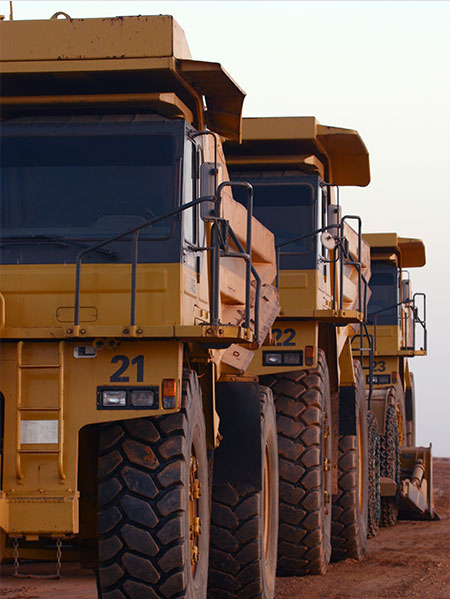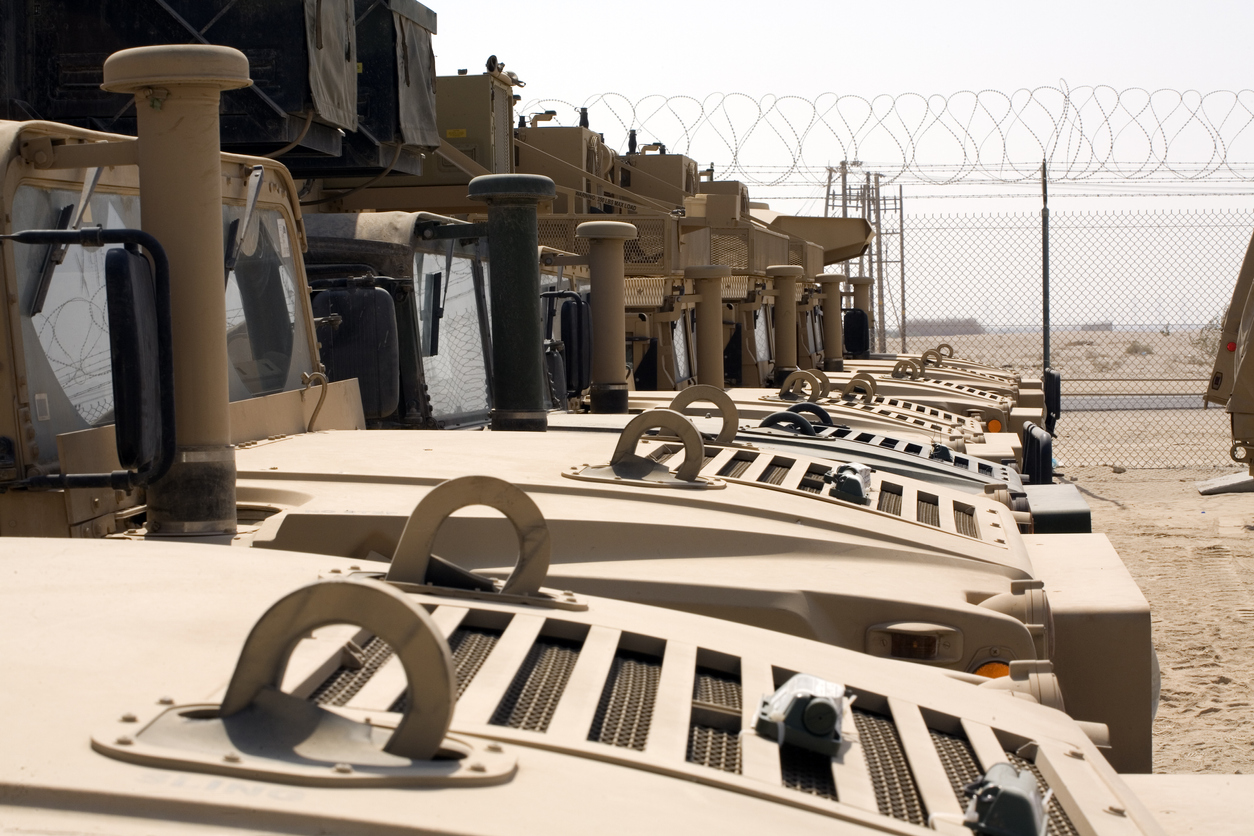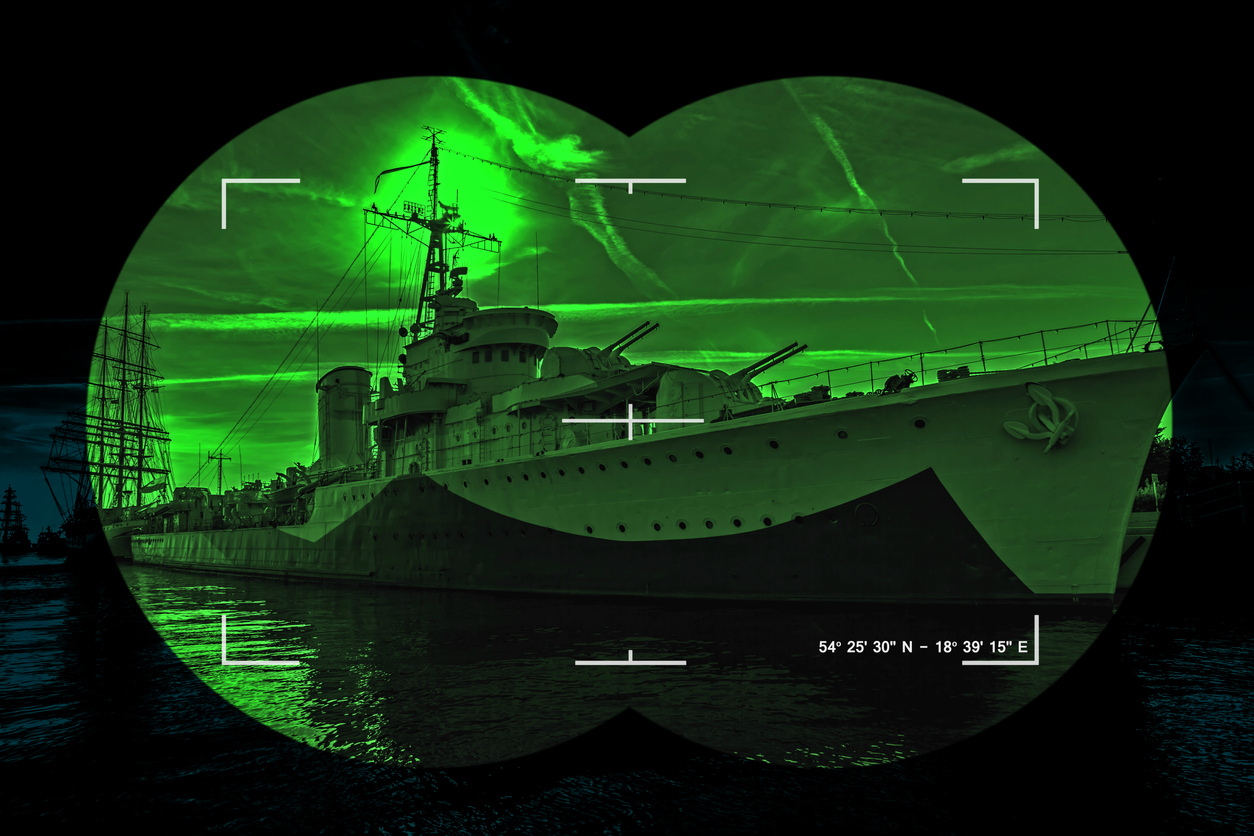Convoy Protection

In present times, needs and purposes of convoys have changed, transportation vehicles have evolved as well as attacking and defensive weapons.
However, type of hostiles, symmetrical or asymmetrical modes of operation, mostly based on ambushes and global level of relative risks stay the same as in the past: destruction, men capture or human losses, losses of valuable transported materials.
In this context, in present time, the optimization of the use and protection of convoys requires to master a number of capabilities: intelligence and preparation, reconnaissance and anticipation, passive and active sensors and sensor fusion, offensive or defensive protection, which must be:
-
permanent and pre-emptive,
-
on purpose
-
in real time during convoys’ trip.
Obviously good and safe communications to be maintained before and for the duration of the trip are the basis on which all the aforementioned capabilities are based.
Convoys are normally made up of heavier armoured vehicles than regular trucks and equipped with active countermeasures to protect the platforms from RPG attacks.
Furthermore, to ensure the safety of drivers and passengers and the integrity of the transported material, it is highly preferable to maintain the mobility of the convoy under attack since the attackers would also have to move to continue their action.
For this reason the convoys are usually protected by heavily armed escort vehicles, which cover the convoy through locations known as high risk areas and use lethal or non-lethal weapons against attacking enemy vehicles to stop them.
-
Pre-emptive intelligence and preparation.
Intelligence step is the first to implement before organizing a convoy.
Long duration permanent intelligence on a given theatre, using all kind of sensors from satellites pictures to special forces observation on the terrain helps to find opponents’ location even in wide surface territory, understanding their strategies, ways of transportation, vehicles’ types, weapons, tactics and procedures, organization, safe house location or regrouping points, stronghold, reserves and decipher hostile intents.
Intelligence information must be organized, presented and enriched regularly on a synthetic digital order of battle map in a Command & Control centre.
Intelligence means are the corner stones of a thoroughly managed secure convoy’s organization.
Additionally, intelligence data can assess all categories of hostile forces and disseminate its knowledge to all actors that could need them including allies, media, political or international organization levels.
Intelligence requires different kind of elements that can be part of a global security solution for convoys (H segment level solution) or included partially in a lower segment level package:
-
C2 centres, could manage several simultaneous convoy operations
-
Communication equipment (HF, VHF, data links, cyphered voice data radio, video)
-
Image Intelligence and software analysis, sensor fusion software
-
Data bases and libraries storage
-
Land based or on board UAV or aircraft COMINT
-
QRC cell (Quick Reaction Capability Cell) with audio and video links with convoys
-
Tactical UAV with EO/IR sensors and weapons
-
Dedicated air surveillance (SIGINT, SAR/MTI, MPA…)
-
Acoustic aiming devices
-
EO observation Satellites
-
Weather station
-
Centralized data processing of remote sensors
-
seismic or acoustic abandoned sensors delivered in advance over given areas
-
special forces EO/IR or audio/video data transmission
Use of automatic or manual systems for intelligence like COMINT, OPTINT, IMINT, and MASINT is important.
However, HUMINT using particularly Special Forces on the terrain, keeping an eye on potential threats and providing easy warning or preventive suppression is particularly interesting to gather data on asymmetric forces.
Even if they are already well equipped with communication, designation and reporting devices, delivery to Special Forces of specific equipment aimed at easing the protection of convoys could be foreseen.
-
Reconnaissance, anticipation and communication
Reconnaissance is the second task to fulfil before starting a convoy.
Its purpose is to ensure a high relative level of confidence in the date and hour of departure, in the selected path to follow and to define the defensive means.
Reconnaissance can be done randomly and several time before the convoy mission in order not to draw attention of attackers on the fact that a reconnaissance mission is a convoy’s starting signal. Reconnaissance can also be done during the convoys’ trip with specific elements in charge to open the ways and warn the convoy about every possible problem.
Reconnaissance tasks can involve many kinds of sensors and communication devices.-
Important convoys in risky theatres can require pre-emptive security operation or preparation:
-
destruction of blockade
-
pre-position of troops, fuel, food or spare vehicle
-
construction of bridges
-
-
Passive and active sensors and sensor fusion
Sensors are key elements as well for intelligence as for reconnaissance.
They are also important to trig or aim defensive actions.
Sensors can be fixed or mobile.
They can operate in a wide spectrum from VLF acoustic through UV up to laser.
They can be correlated to obtain better valid detection or identification.
Sensors can be active or passive.-
Ground Surveillance Radars
These systems are capable of detecting a human target at a distance of 3-10 km.
Airborne threats (such as ULM or UAVs) can be spotted at long distance, while vehicles can be detected and tracked at a distance of 10 – 20 km.
Due to their high sensitivity and wide area coverage, these radars usually generate substantial “noise”, especially when operating adjacent to populated areas.
To reduce such noise, radars are optimized to cover shorter ranges, and implement special filtering algorithms which improve their performance in force protection roles. -
Panoramic IR Scanners
Automatic infrared systems can augment, and sometime replace radars in certain intelligence missions.
Such Systems are based on a FLIR installed on a rotating plate, scanning a sector of up to 180 degrees, detecting suspicious targets, tracking them and triggering alerts after targets are identified as hostile.
The System can track suspicious targets without setting an alarm, until their behaviour becomes threatening or as they enter a high security zone like the usual path of convoys, thus enabling effective operation in populated areas.
The main advantage such system has over radar is the fact that it actually produces an image, for alarm verification. -
Ground Sensors – Electro-Optical
While radars and IR scanners are effective for open area surveillance, urban combat poses distinct environmental challenges for convoy protection.
Special sensors are designed for such applications.
For example, sensors are required to trigger an alarm when movement is detected inside a specific building or room, which could otherwise be considered as “clean”.
Other Sensors are designed to “look through walls” and identify human presence, movement beyond etc.
Ground sensors designed for urban operations are usually multi-sensor packages; their communications are designed to overcome the obstacles and multi-path reflections of urban terrain, and camouflaged to mimic common urban terrain features. -
Acoustic sensors
While expensive IR based systems offer superior performance, the most common sniper/ gunshot detection systems are the acoustic sensors.
Advanced systems employ an array of acoustic detectors (microphones or piezoelectric pressure sensors) which pick up supersonic shockwaves to give an approximate location of gunfire, while analysis of sound waves measured from the muzzle blast further narrow the aiming to point at the source of the gunshot.
Such systems can determine the azimuth, bearing, elevation and sometime, even the identification of the firing source. Sensor Arrays can also fix on the location of the sniper, enabling rapid and effective counter fire. -
Sniper Detectors
Other sensors are used to identify fire sources to facilitate quick and effective response.
Such systems utilize both acoustic and EO sensors.
These systems measure azimuth, elevation and distance of a sniper or small arms firing source. The system can be integrated with remotely controlled counter fire payload, which can mount lethal or less lethal means.
-
-
Offensive or defensive protection
Offensive or defensive assets can be used either permanently during convoy’s trip, or slightly before an attack that has been warned in order to deceive it.
According the type of weapon susceptible to be used by attackers and the potential situations possible it is possible to sort the defensive assets into:-
Not lethal:
-
-
-
Obscurant
They can be easily mounted on various types of vehicles and can be used against all types of optically or visually guided ammunition like RPG, small firearms, machine guns. They are not or few adapted to fast moving vehicles, strong wind environment. They can be triggered quickly by small arms noise detectors or Missile Warning Systems and would allow to protect transporters during the time requested by protection forces to react or suppress enemy fire. Obscurant can prevent friends to see attackers except if they can use air support with data linked video. -
EM Jammers
They generally would be used only on given sections of the trip for compatibility reasons. They are useful against a wide range of EM triggered I.E.D. They can be used to disrupt enemy communication and so their coordination. Extra care much be taken relatively to compatibility with friendly communication means. This can imply to choose when activating the jammer. -
EA devices / Microwave weapons.
They can be used against enemy vehicles to stop them by disrupting the electronic parts of the engine. They can be used against personal to rise the heat of their skin and make then unable to fight -
Standoff Countermeasures
Even when an effective sterile buffer zone is established between the forces and the surrounding inhabitants, troops must eventually maintain close contact with the population along the convoy’s path.
Utilizing advanced technology, such contact can be initiated at extended range, enhancing the protection while also improving cross-language communication.
Utilizing a Long Range Acoustic Device (LARD), troops can issue a verbal challenge with instructions at a distance in excess of 500 meters.
Non-lethal weapon systems can be employed in the “sterile” zone around a convoy, to act as early warning and deter innocent people from entering a too close to vehicles area.
Non-lethal area denial weapons are ranging from sticky or slippery foams and liquids, eliminating movement within buildings, or streets, to stun guns and electronic shock inducers, used to immobilize vehicle’s electrical systems.
Two of the most recent area denial systems are the M-5 Modular Crowd Control Munition (MCCM) and Taser Anti-Personal Munition (TAPM).
Both are a less than lethal mines.
MCCM is loaded with rubber balls instead of steel pellets exploding when triggered by tripwire or sensor input.
TAPM Uses Taser Electric shock device and can disable any human target by remote control or self-activation.
Such Devices are used to deter, disorient and temporarily incapacitate assailants, separating them from innocent bystanders. -
Non-Lethal Directed Energy Weapons
Anti-personnel non-lethal directed energy weapons include lasers, high power electro-magnetic pulse and directional acoustic weapons.
When directed at the target, the laser’s optics temporarily expand to generate a blinding light which penetrates smoke, fog at twice the range of white light.
Modulation of such high intensity light cause disorientation, dazzle and blink reaction that reduces the target’s activity.
Such weapon can be used to disorient and degrade performance of potential threats, such as snipers, or RPG launchers.
Other laser-guided directed-energy weapons work like “artificial lightning” to disable human targets or electronic circuits. -
Directed Acoustic Weapons
In the past, acoustic non-lethal weapons were primarily used as “flash bang” weapons.
When blasted over a crowd or in a room, they created a loud noise and bright flash incapacitated people exposed to the effect for a few seconds.
Flash Bang charges are used on forced entry and counter-terror operations, when hostages are involved.
As they indiscriminately hit every human exposed to the effect, operation of “flash-bang” requires precise timing and procedures to maximize effect on hostiles and eliminate potential damage to friendly forces. -
Active Denial System (ADS)
The Active Denial System (ADS) is a non-lethal, counter-personnel directed energy non-lethal weapon which can be used against human targets at distances beyond the effective range of small arms.
-
-
-
Lethal
-
All kind of guided or unguided lethal weapons aimed by acoustic detectors or through aerial UAV targeting.
-
-
-
External Support
-
Land support
Whatever the advantages of air survey, reconnaissance by land forces before a convoy trip is often the best way to secure the way.
Special Operation Forces or dedicated reconnaissance troops and vehicles can be used to enrich the Common Operational Picture in the C2 Centre.
Land forces can be equipped with a wide range of EO/IR, laser, acoustic and communication means, they can also deploy orphan sensors as seismic or acoustic ones and make use of light personal detection radars.
Pre-positioning support elements in particular stop over or risky points would allow a faster reaction in case of attack.
Nevertheless, the most important point is the good coordination and communication between the convoy and land forces either through the C2 Centre or the QRC or directly through not only voice but also video and data link.
As convoys are moving, time management for the information transfer is critical. -
Air Support
According weather and type of terrain, reconnaissance from above, using flying machines, UAS, aircraft or helicopters is obviously a very good solution.
If available, loitering wide body aircraft with SAR/MTI and foliage penetrator radars on mission during passage of convoys in dangerous areas, could be a very good solution while expensive and limited persistence and thus reserved to high value transport.
Use of SIGINT aircraft for COMINT/EO/IR missions is also useful with the same limitation of availability and cost.
Availability of tactical UAS and their driving teams could be difficult for some countries or in case of several simultaneous important convoys.
On the other side, mini/micro copter or wing UAV, less expensive and easily used, could also throw an eye from a quite close position and are now able to transport valuable and effective payloads like EO/IR sensors or even radars, being launched and retrieved automatically by landing or in net even by moving vehicles.
Air Reconnaissance could however be submitted to weather limitations.
-
-
Importance of Organization
Organization of a convoy is a complex task. In the most complex cases, it can involve cooperation of many expert personnel:-
Logistic people in charge of the payload, type of vehicles and provision (fuel, food, water)
-
Mechanics in charge of vehicles’ preparation, spare parts and on the move repair
-
Intelligence people for briefing convoy’s commander and drivers about risks, choice of path and time of departure,
-
Security or protection elements to select protection devices, weapons or vehicles, convoy’s vehicle order in the file
-
Air support people (aircraft, helicopters, UAV)
-
Air defence people that would manage possible air defence systems
-
Weather forecast people
-
Transmission people
-
Administrative task, relationship with hosting country’s official in case of power projection operation
-
-
Time Management
Time management can be of prime importance. It deals with choice and impact of transportation date and time organization and duration in terms of:-
day/night operation,
-
season,
-
departure hour, expected arrival hour
-
overall duration
-
segmentation, stop over
-
Time management also limits risks; For example, NVG equipped convoys’ driver could have advantages against blind by night asymmetric attackers.






![Passive Direction Finding [DF] Techniques – Phase Comparison Passive Direction Finding [DF] Techniques – Phase Comparison](https://www.emsopedia.org/wp-content/uploads/2021/04/iStock-545810334.jpg)












